Submitted:
12 May 2023
Posted:
16 May 2023
You are already at the latest version
Abstract
Keywords:
1. Introduction
2. Systematic Literature Review
2.1. Thermal Comfort
2.2. Indoor Thermal Comfort Parameters
2.3. Passive Heating and Cooling
2.3.1. Overhanging Balcony Projection with Wooden Frame Shutter System
2.3.2. Mashrabiya and Muscates Window System
2.3.3. Wind Tower System
2.4. Application of Passive Heating and Cooling Systems
3. Methodology
3.1. Conceptual Framework
3.2. Adaptive Thermal Comfort Models
3.3. Database Analysis
3.4. Data Acquisition
4. Analysis and Results
4.1. Adaptive Thermal Comfort Assessment
4.2. ASHRAE Global Thermal Comfort Database II
4.3. Thermal Comfort Assessment in the South-Eastern Mediterranean basin
5. Discussions
5.1. Global Thermal Comfort Assessment
5.2. Passive Design Strategies and its Implications on Adaptive Thermal Comfort
5.3. Limitations
6. Conclusions
Funding
Acknowledgments
Conflicts of Interest
Graphical Abstract
Data set in Mendeley
Data set A
Data set B
Data set C
Data set D
Data set E
Nomenclature
| Nomenclature | |
| °C | Celsius |
| p | Significant level |
| r | Number of elementary effects per parameter |
| R2 | R-squared (%) |
| Ta | Indoor air temperature |
| To | Outdoor air temperature |
| Abbreviations | |
| A/C | Air-Conditioning |
| ASHRAE | American Society of Heating, Refrigerating and Air-conditioning Engineers |
| BS | British Standards |
| CBE | Center of the Built Environment |
| CCHT | Canadian Centre for Housing Technology |
| CIBSE | Chartered Institution of Building Services Engineers |
| CWEC | Canadian Weather for Energy Calculations |
| EAHE | Earth Air Heat Exchanger |
| EDSL | Environmental Design Solutions |
| EN | European Norm |
| FLIR | Forward-Looking Infrared Thermometer |
| GHG | Greenhouse Gases |
| HIS | Heat Stress Index Factor |
| HVAC | Heating Ventilation and Air-Conditioning |
| IES | Integrated Environmental Solution |
| IMAC-R | India Model for Adaptive Comfort |
| IRT | Infrared Radiometer Thermography |
| OP | Operative Air Temperature |
| MCAR | Missing Completely at Random |
| PPD | Predicted Percentage of Dissatisfied |
| PMD | Predicted Mean Vote |
| RH | Relative Humidity |
| SD | Standard Deviation |
| SPSS | Statistical Package for the Social Sciences |
| SCAT | European Survey Research Project Database |
| TPV | Thermal Preference Votes |
| TSV | Thermal Sensation Votes |
| WWR | Window-to-Wall Ratio |
Appendix A


References
- Al-Azri, N., Zurigatb, YH. & Al-Rawahia, N., 2013. Selection and assessment of passive cooling techniques for residential buildings in Oman using a bioclimatic approach. The Journal of Engineering Research, 10(2), 53-65.
- Al Tawayha, F., Braganca, L., & Mateus, R. (2019). Contribution of the vernacular architecture to the sustainability: A comparative study between the contemporary areas and the old quarter of a Mediterranean city. Sustainability (Switzerland), 11(3). [CrossRef]
- Altomonte, S., Allen, J., Bluyssen, P. M., Brager, G., Heschong, L., Loder, A., Schiavon, S., Veitch, J. A., Wang, L., & Wargocki, P. (2020). Ten questions concerning well-being in the built environment. Building and Environment, 180. [CrossRef]
- Bencheikh, D., & Bederina, M. (2019). Assessing the duality of thermal performance and energy efficiency of residential buildings in hot arid climate of Laghouat, Algeria. International Journal of Energy and Environmental Engineering. [CrossRef]
- Bonte, M., Thellier, F., & Lartigue, B. (2014). Impact of occupant’s actions on energy building performance and thermal sensation. Energy and Buildings, 76, 219–227. [CrossRef]
- Bouden, C., & Ghrab, N. (2005). An adaptive thermal comfort model for the Tunisian context: A field study results. Energy and Buildings, 37(9), 952–963. [CrossRef]
- Brager, G. S., & de Dear, R. (n.d.). Climate, Comfort & Natural Ventilation: A new adaptive comfort standard for ASHRAE Standard 55.
- Brager ’i, G. S., & de Dear ’, R. J. (1998). Thermal adaptation in the built environment: a literature review. In ELSEVIEK Energy and Building\ (Vol. 17).
- Busch, J.F. (1992). A tale of two populations: thermal comfort in air-conditioned and naturally ventilated offices in Thailand. Energy and Buildings, 18(3–4), 235–249. [CrossRef]
- Cândido, C., de Dear, R. J., Lamberts, R., & Bittencourt, L. (2010). Air movement acceptability limits and thermal comfort in Brazil’s hot humid climate zone. Building and Environment, 45(1), 222–229. [CrossRef]
- Cao, B., Zhu, Y., Ouyang, Q., Zhou, X., & Huang, L. (2011). Field study of human thermal comfort and thermal adaptability during the summer and winter in Beijing. In Energy and Buildings (Vol. 43, pp. 1051–1056). [CrossRef]
- Carlucci, S., Bai, L., de Dear, R., & Yang, L. (2018). Review of adaptive thermal comfort models in built environmental regulatory documents. Building and Environment. Elsevier Ltd. [CrossRef]
- Case, C. (2017). Performance of Passive Design Architecture Application in Hot and Dry Performance of Passive Design Architecture Application in Hot and Dry Climate. Case study: Cairo, Egypt, (July).
- Chen, S., Liu, C., Lin, G., Hänninen, O., Dong, H., & Xiong, K. (2021). The role of absolute humidity in respiratory mortality in Guangzhou, a hot and wet city of South China. Environmental Health and Preventive Medicine, 26(1). [CrossRef]
- Cheung, T., Schiavon, S., Parkinson, T., Li, P., & Brager, G. (2019). Analysis of the accuracy on PMV – PPD model using the ASHRAE Global Thermal Comfort Database II. Building and Environment, 153, 205–217. [CrossRef]
- Coley, D., Herrera, M., Fosas, D., Liu, C., & Vellei, M. (2017). Probabilistic adaptive thermal comfort for resilient design. Building and Environment, 123, 109–118. [CrossRef]
- Dabaieh, M., & Serageldin, A. A. (2020). Earth air heat exchanger, Trombe wall and green wall for passive heating and cooling in premium passive refugee house in Sweden. Energy Conversion and Management, 209, 112555. [CrossRef]
- Day, J.K., & Gunderson, D. E. (2015). Understanding high performance buildings: The link between occupant knowledge of passive design systems, corresponding behaviors, occupant comfort and environmental satisfaction. Building and Environment, 84, 114–124. [CrossRef]
- De Dear, R., & Brager, G. S. (2001). The adaptive model of thermal comfort and energy conservation in the built environment. International Journal of Biometeorology, 45(2), 100–108. [CrossRef]
- De Dear, R. J., Akimoto, T., Arens, E. A., Brager, G., Candido, C., Cheong, K. W. D., Li, B., Nishihara, N., Sekhar, S. C., Tanabe, S., Toftum, J., Zhang, H., & Zhu, Y. (2013). Progress in thermal comfort research over the last twenty years. In Indoor Air (Vol. 23, Issue 6, pp. 442–461). [CrossRef]
- De Dear, R., Kim, J., & Parkinson, T. (2018). Residential adaptive comfort in a humid subtropical climate—Sydney Australia. Energy and Buildings, 158, 1296–1305. [CrossRef]
- De Dear, R., Xiong, J., Kim, J., & Cao, B. (2020). A review of adaptive thermal comfort research since 1998. Energy and Buildings. Elsevier Ltd. [CrossRef]
- De Vecchi, R., Cândido, C., & Lamberts, R. (2012). Thermal history and its influence on occupants’ thermal acceptability and cooling preferences in warm-humid climates: A new desire for comfort. In Proceedings of 7th Windsor Conference: The Changing Context of Comfort in an Unpredictable World.
- Dhaka, S., Mathur, J., Brager, G., & Honnekeri, A. (2015). Assessment of thermal environmental conditions and quantification of thermal adaptation in naturally ventilated buildings in composite climate of India. Building and Environment, 86, 17–28. [CrossRef]
- Djamila, H. (2017). Indoor thermal comfort predictions: Selected issues and trends. Renewable and Sustainable Energy Reviews, 74, 569–580.
- Dong, X., Soebarto, V., & Griffith, M. (2014). Achieving thermal comfort in naturally ventilated rammed earth houses. Building and Environment, 82, 588–598. [CrossRef]
- D’souza, U. (2013). The thermal performance of green roofs in a hot, humid microclimate. Transactions on Ecology and The Environment, 173, 1743–3541. [CrossRef]
- D’Souza, U. (2014). Measuring green roof performance, a solution to sustainable urban development in the uae. International Journal of Sustainable Development and Planning, 9(3), 376–388. [CrossRef]
- Duarte Roa, C., Schiavon, S., & Parkinson, T. (2020). Targeted occupant surveys: A novel method to effectively relate occupant feedback with environmental conditions. Building and Environment, 184. [CrossRef]
- Elessawy, F. M. (2020). The Consequences of Population Growth on the Demographic Characteristics of Abu Dhabi City in the United Arab Emirates. Advances in Economics and Business, 8(5), 268–276. [CrossRef]
- Encinas, F., & De Herde, A. (2013). Sensitivity analysis in building performance simulation for summer comfort assessment of apartments from the real estate market. Energy and Buildings, 65, 55–65. [CrossRef]
- Fabi, V., Andersen, R. V., Corgnati, S., & Olesen, B. W. (2012). Occupants’ window opening behaviour: A literature review of factors influencing occupant behaviour and models. Building and Environment, 58, 188–198. [CrossRef]
- Fanger, P.O. (1973). Assessment of man’s thermal comfort in practice. [CrossRef]
- Fernandez-Antolin, M. M., del Río, J. M., Costanzo, V., Nocera, F., & Gonzalez-Lezcano, R. A. (2019). Passive design strategies for residential buildings in different Spanish climate zones. Sustainability (Switzerland), 11(18). [CrossRef]
- Fernandes, J., Mateus, R., Gervásio, H., Silva, S. M., & Bragança, L. (2019). Passive strategies used in Southern Portugal vernacular rammed earth buildings and their influence in thermal performance. Renewable Energy, 142, 345–363. [CrossRef]
- Földváry, V., Bekö, G., Langer, S., Arrhenius, K., & Petráš, D. (2017). Effect of energy renovation on indoor air quality in multifamily residential buildings in Slovakia. Building and Environment, 122, 363–372. [CrossRef]
- Földváry Ličina, V., Cheung, T., Zhang, H., de Dear, R., Parkinson, T., Arens, E., Chun, C., Schiavon, S., Luo, M., Brager, G., Li, P., Kaam, S., Adebamowo, M. A., Andamon, M. M., Babich, F., Bouden, C., Bukovianska, H., Candido, C., Cao, B., … Zhou, X. (2018). Development of the ASHRAE Global Thermal Comfort Database II. Building and Environment, 142, 502–512. [CrossRef]
- Forcada, N., Gangolells, M., Casals, M., Tejedor, B., Macarulla, M., & Gaspar, K. (2021). Field study on thermal comfort in nursing homes in heated environments. Energy and Buildings, 244. [CrossRef]
- Fountain, M., Brager, G., & de Dear, R. (1996). E IE GY AHD BUILDIPIG Expectations of indoor climate control. In Energy and Buildings (Vol. 24).
- Francis, M. (2013). Network for Comfort and Energy Use in Buildings A ventilation system for Abu Dhabi using a Solar Chimney, an Earth Tube and a Desiccant Wheel.
- Gaetani, I., Hoes, P. J., & Hensen, J. L. M. (2016). Occupant behavior in building energy simulation: Towards a fit-for-purpose modeling strategy. Energy and Buildings, 121, 188–204. [CrossRef]
- Geronazzo, A., Brager, G., & Manu, S. (2018). Making sense of building data: New analysis methods for understanding indoor climate. Building and Environment, 128, 260–271. [CrossRef]
- Givoni B. (1994). In Passive and Low Energy Cooling of Buildings, p. 33, Van Nostrand Reinhold.
- Golzari, N. (2014). Re-reading affordable technologies: the role of techno cultural elements and invisible technologies in sustainable design for the middle east. PhD thesis, University of Westminster.
- Gupta, N. (2017). Exploring passive cooling potentials in Indian vernacular architecture. Journal of Buildings and Sustainability, 2(1), 1–11.
- Gustin, M., McLeod, R. S., & Lomas, K. J. (2019). Can semi-parametric additive models outperform linear models, when forecasting indoor temperatures in free-running buildings? Energy and Buildings, 193, 250–266. [CrossRef]
- Halawa, E., & Van Hoof, J. (2012). The adaptive approach to thermal comfort: A critical overview. Energy and Buildings. [CrossRef]
- Haldi, F., & Robinson, D. (2010). On the unification of thermal perception and adaptive actions. Building and Environment, 45(11), 2440–2457. [CrossRef]
- Hawighorst, M., Schweiker, M., & Wagner, A. (2016). Thermo-specific self-efficacy (specSE) in relation to perceived comfort and control. Building and Environment, 102, 193–206. [CrossRef]
- He, Y., Parkinson, T., Arens, E., Zhang, H., Li, N., Peng, J., Elson, J., & Maranville, C. (2022). Creating alliesthesia in cool environments using personal comfort systems. Building and Environment, 209, 108642. [CrossRef]
- Heidari, S., & Sharples, S. (2002). A comparative analysis of short-term and long-term thermal comfort surveys in Iran. Energy and Buildings, 34(6), 607–614. [CrossRef]
- Huang, H., Binti Wan Mohd Nazi, W. I., Yu, Y., & Wang, Y. (2020). Energy performance of a high-rise residential building retrofitted to passive building standard – A case study. Applied Thermal Engineering, 181, 115902. [CrossRef]
- Ibraheem, O. and Ford, B. (2012). The feasibility of passive down-draught evaporative cooling for high-rise office buildings in Cairo. Architectural Science Review, 55(4), 315-327.
- Indraganti, M., Ooka, R., Rijal, H. B., & Brager, G. S. (2014). Adaptive model of thermal comfort for offices in hot and humid climates of India. Building and Environment, 74, 39–53. [CrossRef]
- Jara-Baeza, F., Rajagopalan, P., & Andamon, M. M. (2023). A holistic assessment of indoor environmental quality perception in Australian high-rise social housing. Energy and Buildings, 284. [CrossRef]
- Jeong, B., Jeong, J. W., & Park, J. S. (2016). Occupant behavior regarding the manual control of windows in residential buildings. Energy and Buildings, 127, 206–216. [CrossRef]
- Jin, X., Zhang, C., Xiao, F., Li, A., & Miller, C. (2023). A review and reflection on open datasets of city-level building energy use and their applications. Energy and Buildings, 285, 112911. [CrossRef]
- Jomehzadeh, F., Nejat, P., Calautit, J. K., Yusof, M. B. M., Zaki, S. A., Hughes, B. R., & Yazid, M. N. A. W. M. (2017). A review on windcatcher for passive cooling and natural ventilation in buildings, Part 1: Indoor air quality and thermal comfort assessment. Renewable and Sustainable Energy Reviews. Elsevier Ltd. 1. [CrossRef]
- Kalmár, F. (2016). Investigation of thermal perceptions of subjects with diverse thermal histories in warm indoor environment. Building and Environment, 107, 254–262. [CrossRef]
- Kanteh Sakiliba, S., Bolton, N., & Sooriyabandara, M. (2020). The Energy Performance and Techno-Economic Analysis of Zero Energy Bill Homes. Energy and Buildings, 228. [CrossRef]
- Kaynakli, O., & Kilic, M. (2005). Investigation of indoor thermal comfort under transient conditions. Building and Environment, 40(2), 165–174. [CrossRef]
- Kent, M., Parkinson, T., Kim, J., & Schiavon, S. (2021). A data-driven analysis of occupant workspace dissatisfaction. Building and Environment, 205. [CrossRef]
- Kim, J., de Dear, R., Parkinson, T., & Candido, C. (2017). Understanding patterns of adaptive comfort behaviour in the Sydney mixed-mode residential context. Energy and Buildings, 141, 274–283. [CrossRef]
- Kim, J., de Dear, R., Tartarini, F., Parkinson, T., & Cooper, P. (2019). Ventilation mode effect on thermal comfort in a mixed mode building. IOP Conference Series: Materials Science and Engineering, 609(4). [CrossRef]
- Kim, J., Schiavon, S., & Brager, G. (2018). Personal comfort models – A new paradigm in thermal comfort for occupant-centric environmental control. Building and Environment, 132, 114–124. [CrossRef]
- Kim, J., Tartarini, F., Parkinson, T., Cooper, P., & de Dear, R. (2019). Thermal comfort in a mixed-mode building: Are occupants more adaptive? Energy and Buildings, 203. [CrossRef]
- Kim, J., Zhou, Y., Schiavon, S., Raftery, P., & Brager, G. (2018). Personal comfort models: Predicting individuals’ thermal preference using occupant heating and cooling behavior and machine learning. Building and Environment, 129, 96–106. [CrossRef]
- Ko, W. H., Schiavon, S., Brager, G., & Levitt, B. (2018). Ventilation, thermal and luminous autonomy metrics for an integrated design process. Building and Environment, 145, 153–165. [CrossRef]
- Ko, W. H., Schiavon, S., Zhang, H., Graham, L. T., Brager, G., Mauss, I., & Lin, Y. W. (2020). The impact of a view from a window on thermal comfort, emotion, and cognitive performance. Building and Environment, 175. [CrossRef]
- Kumareswaran, K., Rajapaksha, I., & Jayasinghe, G. Y. (2021). Energy poverty, occupant comfort, and wellbeing in internally displaced people’s residences in Sri Lanka. Energy and Buildings, 236. [CrossRef]
- Landsman, J., Brager, G., & Doctor-Pingel, M. (2018). Performance, prediction, optimization, and user behavior of night ventilation. Energy and Buildings, 166, 60–72. [CrossRef]
- Li, H., Xu, G., Chen, J., & Duan, J. (2022). Investigating the Adaptive Thermal Comfort of the Elderly in Rural Mutual Aid Homes in Central Inner Mongolia. Sustainability (Switzerland), 14(11). [CrossRef]
- Li, P., Froese, T. M., & Brager, G. (2018). Post-occupancy evaluation: State-of-the-art analysis and state-of-the-practice review. In Building and Environment (Vol. 133, pp. 187–202). Elsevier Ltd. [CrossRef]
- Li, P., Parkinson, T., Brager, G., Schiavon, S., Cheung, T. C. T., & Froese, T. (2019). A data-driven approach to defining acceptable temperature ranges in buildings. Building and Environment, 153, 302–312. [CrossRef]
- Liu, J., Yao, R., & McCloy, R. (2012). A method to weight three categories of adaptive thermal comfort. Energy and Buildings, 47, 312–320. [CrossRef]
- Little, R. J. A. (1988). A test of missing completely at random for multivariate data with missing values. Journal of the American Statistical Association, 83, 1198–1202.
- Lu, S., Wang, W., Lin, C., & Hameen, E. C. (2019). Data-driven simulation of a thermal comfort-based temperature set-point control with ASHRAE RP884. Building and Environment, 156, 137–146. [CrossRef]
- Luo, M., Wang, Z., Brager, G., Cao, B., & Zhu, Y. (2018). Indoor climate experience, migration, and thermal comfort expectation in buildings. Building and Environment, 141, 262–272. [CrossRef]
- Luo, M., Zhang, H., Raftery, P., Zhou, L., Parkinson, T., Arens, E., He, Y., & Present, E. (2021). Detailed measured air speed distribution in four commercial buildings with ceiling fans. Building and Environment, 200. [CrossRef]
- Mishra, A.K., & Ramgopal, M. (2015). An adaptive thermal comfort model for the tropical climatic regions of India (Köppen climate type A). Building and Environment, 85, 134–143. [CrossRef]
- Mirahmadi, F., & Altan, H. (2018). A solution for future designs using techniques from vernacular architecture in southern Iran. Sustainable Buildings, 3, 1. [CrossRef]
- Newman, D. A. (2014). Missing Data: Five Practical Guidelines. Organizational Research Methods, 17(4), 372–411. [CrossRef]
- Nicol, F. (2004). Adaptive thermal comfort standards in the hot-humid tropics. In Energy and Buildings (Vol. 36, pp. 628–637). [CrossRef]
- Nicol, F., Wilson, M., & Chiancarella, C. (2006). Using field measurements of desktop illuminance in European offices to investigate its dependence on outdoor conditions and its effect on occupant satisfaction, and the use of lights and blinds. Energy and Buildings, 38(7), 802–813. [CrossRef]
- Nicol, F., & Humphreys, M. (2010). Derivation of the adaptive equations for thermal comfort in free-running buildings in European standard EN15251. Building and Environment, 45(1), 11–17. [CrossRef]
- Nicol, J.F and Humphreys M.A. (2010). Derivation of the equations for comfort in free- running buildings in CEN Standard EN15251, Buildings and Environment 45(1) 11-17 for more detail of the two standards and their similarities and differences.
- Nicol, F. (2017). Temperature and adaptive comfort in heated, cooled and free-running dwellings. Building Research & Information, 45(7), 730–744. [CrossRef]
- Nicol, F., Bahadur Rijal, H., Imagawa, H., & Thapa, R. (2020). The range and shape of thermal comfort and resilience. Energy and Buildings, 224. [CrossRef]
- Nikolopoulou, M., & Lykoudis, S. (2006). Thermal comfort in outdoor urban spaces: Analysis across different European countries. Building and Environment, 41(11), 1455–1470. [CrossRef]
- Niza, I. L., Luz, I. M. da, Bueno, A. M., & Broday, E. E. (2022). Thermal Comfort and Energy Efficiency: Challenges, Barriers, and Step towards Sustainability. Smart Cities, 5(4), 1721–1741. [CrossRef]
- Olesen, B. W., & Brager, G. S. (2004). UC Berkeley Indoor Environmental Quality (IEQ) Title Publication Date. https://escholarship.org/uc/item/2m34683k.
- Ozarisoy, B., & Altan, H. (2021a). A novel methodological framework for the optimisation of post-war social housing developments in the South-eastern Mediterranean climate: Policy design and life-cycle cost impact analysis of retrofitting strategies, Solar Energy, 225. [CrossRef]
- Ozarisoy, B., & Altan, H. (2021b). Regression forecasting of ‘neutral’ adaptive thermal comfort: A field study investigation in the south-eastern Mediterranean climate of Cyprus. Building and Environment, 202. [CrossRef]
- Ozarisoy, B. (2022). Assessing the Domestic Energy Use and Thermal Comfort of Occupants in a Post-war Social Housing Development Estate in Famagusta, Northern Cyprus. [CrossRef]
- Parker, J. (2020). The Leeds urban heat island and its implications for energy use and thermal comfort. Energy and Buildings. [CrossRef]
- Parkinson, T., de Dear, R., & Brager, G. (2020). Nudging the adaptive thermal comfort model. Energy and Buildings, 206. [CrossRef]
- Parkinson, T., Parkinson, A., & de Dear, R. (2019a). Continuous IEQ monitoring system: Context and development. Building and Environment, 149, 15–25. [CrossRef]
- Parkinson, T., Parkinson, A., & de Dear, R. (2019b). Continuous IEQ monitoring system: Performance specifications and thermal comfort classification. Building and Environment, 149, 241–252. [CrossRef]
- Parkinson, T., Schiavon, S., de Dear, R., & Brager, G. (2021). Overcooling of offices reveals gender inequity in thermal comfort. Scientific Reports, 11(1). [CrossRef]
- Parkinson, T., & Schweiker, M. (2022). New Approaches to Modelling Occupant Comfort. In Buildings (Vol. 12, Issue 7). MDPI. [CrossRef]
- Parkinson, T., Zhang, H., Arens, E., He, Y., de Dear, R., Elson, J., Parkinson, A., Maranville, C., & Wang, A. (2021). Predicting thermal pleasure experienced in dynamic environments from simulated cutaneous thermoreceptor activity. Indoor Air, 31(6), 2266–2280. [CrossRef]
- Pastore, L., & Andersen, M. (2019). Building energy certification versus user satisfaction with the indoor environment: Findings from a multi-site post-occupancy evaluation (POE) in Switzerland. Building and Environment, 150, 60–74. [CrossRef]
- Porritt, S., Shao, L., Cropper, P., & Goodier, C. (2011). Adapting dwellings for heat waves. Sustainable Cities and Society, 1(2), 81–90. [CrossRef]
- Rana, R., Kusy, B., Jurdak, R., Wall, J., & Hu, W. (2013). Feasibility analysis of using humidex as an indoor thermal comfort predictor. Energy and Buildings, 64, 17–25. [CrossRef]
- Rawal, R., Shukla, Y., Vardhan, V., Asrani, S., Schweiker, M., de Dear, R., Garg, V., Mathur, J., Prakash, S., Diddi, S., Ranjan, S. V., Siddiqui, A. N., & Somani, G. (2022). Adaptive thermal comfort model based on field studies in five climate zones across India. Building and Environment, 219. [CrossRef]
- Romero, R. A., Bojórquez, G., Corral, M., & Gallegos, R. (2013). Energy and the occupant’s thermal perception of low-income dwellings in hot-dry climate: Mexicali, México. Renewable Energy, 49, 267–270. [CrossRef]
- Ryu, J., Kim, J., Hong, W., & de Dear, R. (2020). Quantifying householder tolerance of thermal discomfort before turning on air-conditioner. Energy and Buildings, 211. [CrossRef]
- Rupp, R. F., Parkinson, T., Kim, J., Toftum, J., & de Dear, R. (2022). The impact of occupant’s thermal sensitivity on adaptive thermal comfort model. Building and Environment, 207. [CrossRef]
- Saber, H. H., Hajiah, A. E., & Maref, W. (2020). Impact of reflective roofs on the overall energy savings of whole buildings. E3S Web of Conferences, 172. [CrossRef]
- Sahebzadeh, S., Heidari, A., Kamelnia, H., & Baghbani, A. (2017). Sustainability features of Iran’s vernacular architecture: A comparative study between the architecture of hot-arid and hot-arid-windy regions. Sustainability (Switzerland), 9(5). [CrossRef]
- Sánchez-García, D., Rubio-Bellido, C., Pulido-Arcas, J. A., Guevara-García, F. J., & Canivell, J. (2018). Adaptive comfort models applied to existing Dwellings in Mediterranean climate considering globalwarming. Sustainability (Switzerland), 10(10). [CrossRef]
- Sanchez-Guevara, C., Núñez Peiró, M., Taylor, J., Mavrogianni, A., & Neila González, J. (2019). Assessing population vulnerability towards summer energy poverty: Case studies of Madrid and London. Energy and Buildings, 190, 132–143. [CrossRef]
- Santangelo, A., & Tondelli, S. (2017). Occupant behaviour and building renovation of the social housing stock: Current and future challenges. Energy and Buildings, 145, 276–283. [CrossRef]
- Santangelo, A., Yan, D., Feng, X., & Tondelli, S. (2018). Renovation strategies for the Italian public housing stock: Applying building energy simulation and occupant behaviour modelling to support decision-making process. Energy and Buildings, 167, 269–280. [CrossRef]
- Schiano-Phan, R. (2004). The development of passive downdraught evaporative cooling systems using porous ceramic evaporators and their application in residential buildings. PhD thesis, British Library, London.
- Schiano-Phan, R. (2009). The use of porous ceramic for passive evaporative cooling in buildings. Available from: http://www.phdc.eu/uploads/media/PHDC_Cooling_with_porous_ceramic_01-06-09.pdf.
- Schiano-Phan, R. (2010). Environmental retrofit: building integrated passive cooling in housing, Architectural Research Quarterly, Volume 14, Issue 02, pp 139-151. http://journals.cambridge.org/abstract_S1359135510000758.
- Schianao-Phan, R. (2012). Post-occupancy evaluation of non-domestic buildings using passive downdraught evaporative cooling in south-west USA. Architectural Science Review, 55(4), 1-21.
- Schweiker, M., & Wagner, A. (2015). A framework for an adaptive thermal heat balance model (ATHB). Building and Environment, 94(P1), 252–262. [CrossRef]
- Singh, S., & Chani, P. S. (2018). Thermal comfort analysis of Indian subjects in multi-storeyed apartments: An adaptive approach in composite climate. Indoor and Built Environment, 27(9), 1216–1246. [CrossRef]
- Singh, M. K., Mahapatra, S., & Atreya, S. K. (2011). Adaptive thermal comfort model for different climatic zones of North-East India. Applied Energy, 88(7), 2420–2428. [CrossRef]
- Song, Y., Sun, Y., Luo, S., Tian, Z., Hou, J., Kim, J., Parkinson, T., & de Dear, R. (2018). Residential adaptive comfort in a humid continental climate – Tianjin China. Energy and Buildings, 170, 115–121. [CrossRef]
- Taleghani, M., Tenpierik, M., Kurvers, S., & Van Den Dobbelsteen, A. (2013). A review into thermal comfort in buildings. Renewable and Sustainable Energy Reviews. [CrossRef]
- Tartarini, F., & Schiavon, S. (2020a). pythermalcomfort: A Python package for thermal comfort research. SoftwareX, 12. [CrossRef]
- Tartarini, F., Schiavon, S., Cheung, T., & Hoyt, T. (2020b). CBE Thermal Comfort Tool: Online tool for thermal comfort calculations and visualizations. SoftwareX, 12. [CrossRef]
- Teitelbaum, E., Jayathissa, P., Miller, C., & Meggers, F. (2020). Design with Comfort: Expanding the psychrometric chart with radiation and convection dimensions. Energy and Buildings, 209. [CrossRef]
- Tetteh, M. O., Darko, A., Chan, A. P. C., Jafari, A., Brilakis, I., Chen, W., Nani, G., & Kwame Yevu, S. (2022). Scientometric mapping of global research on green retrofitting of existing buildings (GREB): Pathway towards a holistic GREB framework. In Energy and Buildings (Vol. 277). Elsevier Ltd. [CrossRef]
- Toe, D. H. C., & Kubota, T. (2013). Development of an adaptive thermal comfort equation for naturally ventilated buildings in hot-humid climates using ASHRAE RP-884 database. Frontiers of Architectural Research, 2(3), 278–291. [CrossRef]
- Tuck, N. W., Zaki, S. A., Hagishima, A., Rijal, H. B., Zakaria, M. A., & Yakub, F. (2019). Effectiveness of free running passive cooling strategies for indoor thermal environments: Example from a two-storey corner terrace house in Malaysia. Building and Environment, 160. [CrossRef]
- Van Hoof, J., & Hensen, J. L. M. (2007). Quantifying the relevance of adaptive thermal comfort models in moderate thermal climate zones. Building and Environment, 42(1), 156–170. [CrossRef]
- Vellei, M., Herrera, M., Fosas, D., & Natarajan, S. (2017). The influence of relative humidity on adaptive thermal comfort. Building and Environment, 124, 171–185. [CrossRef]
- Yao, R., Li, B., & Liu, J. (2009). A theoretical adaptive model of thermal comfort - Adaptive Predicted Mean Vote (aPMV). Building and Environment, 44(10), 2089–2096. [CrossRef]
- Yang, J., Nam, I., & Sohn, J. R. (2016). The influence of seasonal characteristics in elderly thermal comfort in Korea. Energy and Buildings, 128, 583–591. [CrossRef]
- Yi, C. yoon, Childs, C., Peng, C., & Robinson, D. (2022a). Thermal comfort modelling of older people living in care homes: An evaluation of heat balance, adaptive comfort, and thermographic methods. Building and Environment, 207, 108550. [CrossRef]
- Yuan, J., Cong, Y., Yao, S., Dai, C., & Li, Y. (2022). Research on the thermal comfort of the elderly in rural areas of cold climate, China. Advances in Building Energy Research, 16(5), 612–642. [CrossRef]
- Wang, Z., de Dear, R., Luo, M., Lin, B., He, Y., Ghahramani, A., & Zhu, Y. (2018). Individual difference in thermal comfort: A literature review. In Building and Environment (Vol. 138, pp. 181–193). Elsevier Ltd. [CrossRef]
- Wang, Z., Parkinson, T., Li, P., Lin, B., & Hong, T. (2019). The Squeaky wheel: Machine learning for anomaly detection in subjective thermal comfort votes. Building and Environment, 151, 219–227. [CrossRef]
- Zhang, N., Cao, B., Wang, Z., Zhu, Y., & Lin, B. (2017). A comparison of winter indoor thermal environment and thermal comfort between regions in Europe, North America, and Asia. Building and Environment, 117, 208–217. [CrossRef]
- Zhao, Q., Lian, Z., & Lai, D. (2021). Thermal comfort models and their developments: A review. In Energy and Built Environment (Vol. 2, Issue 1, pp. 21–33). KeAi Communications Co. [CrossRef]

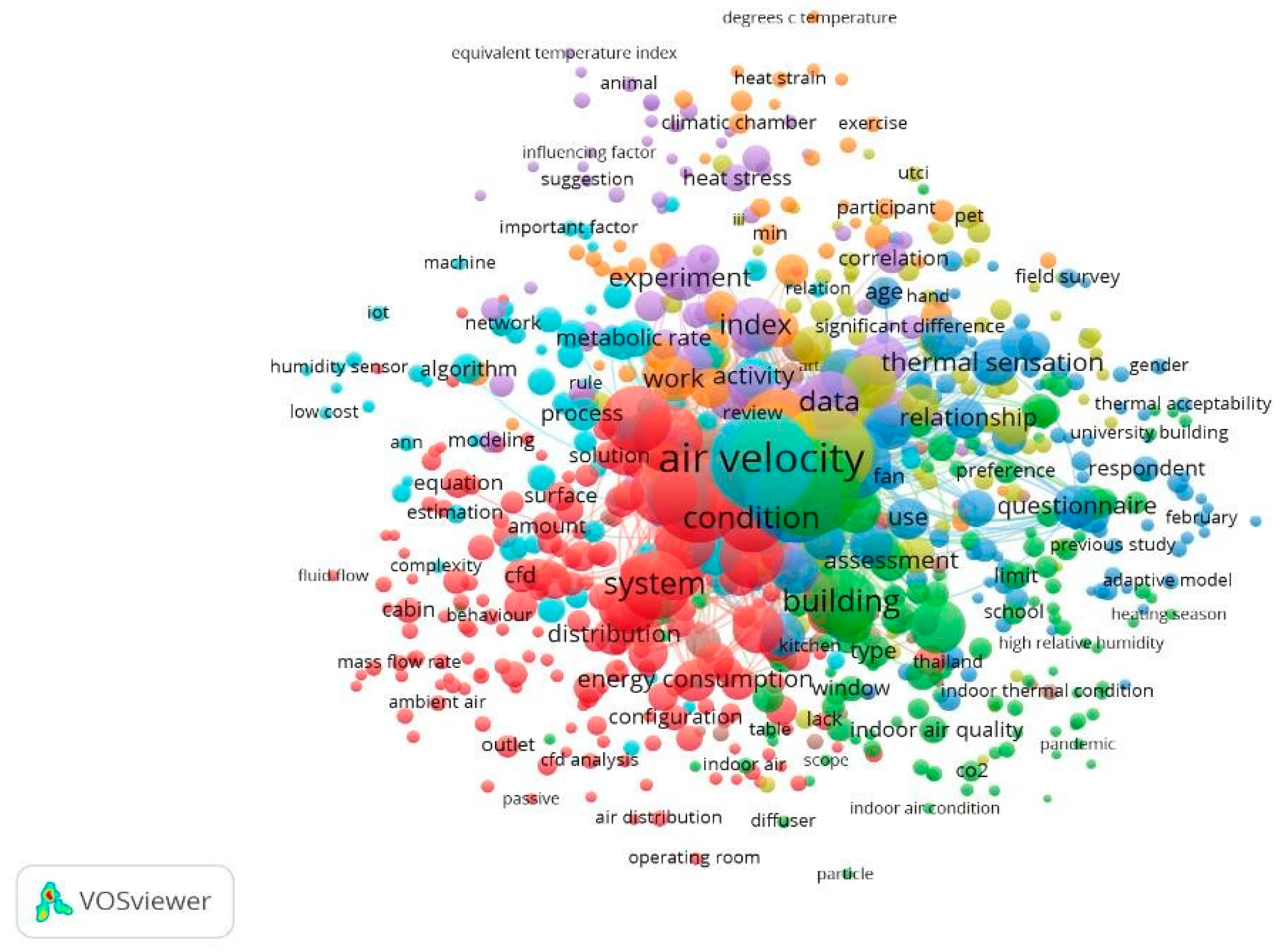







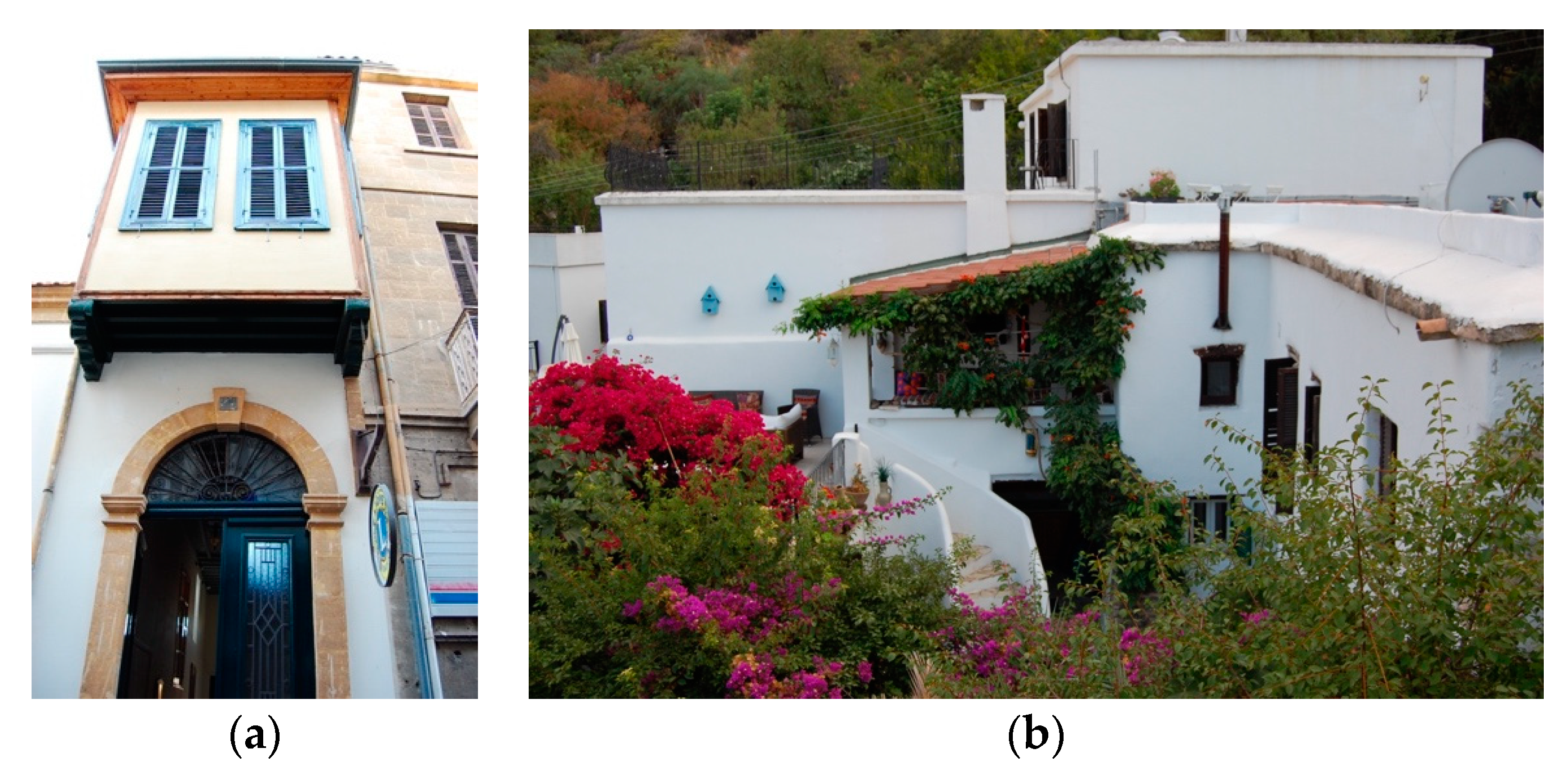
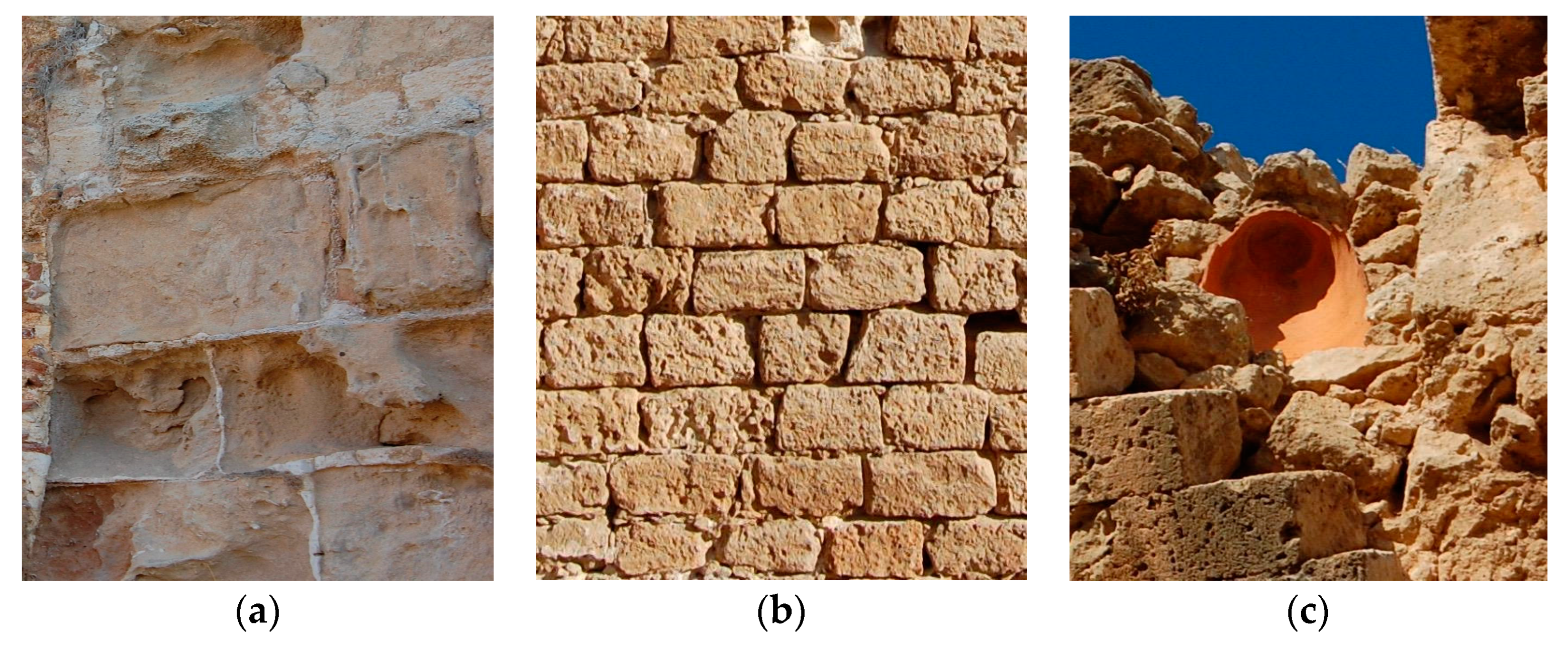
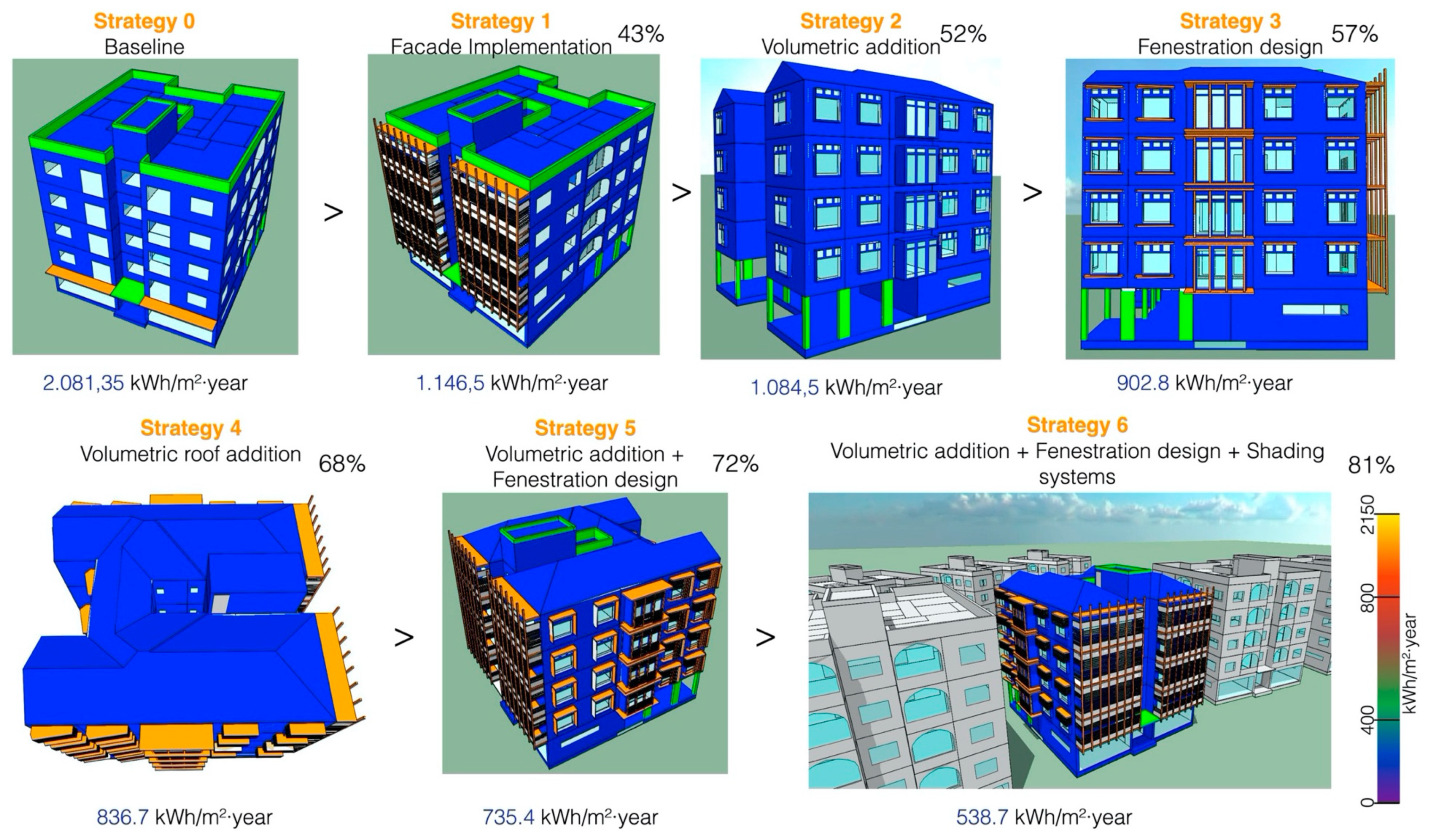




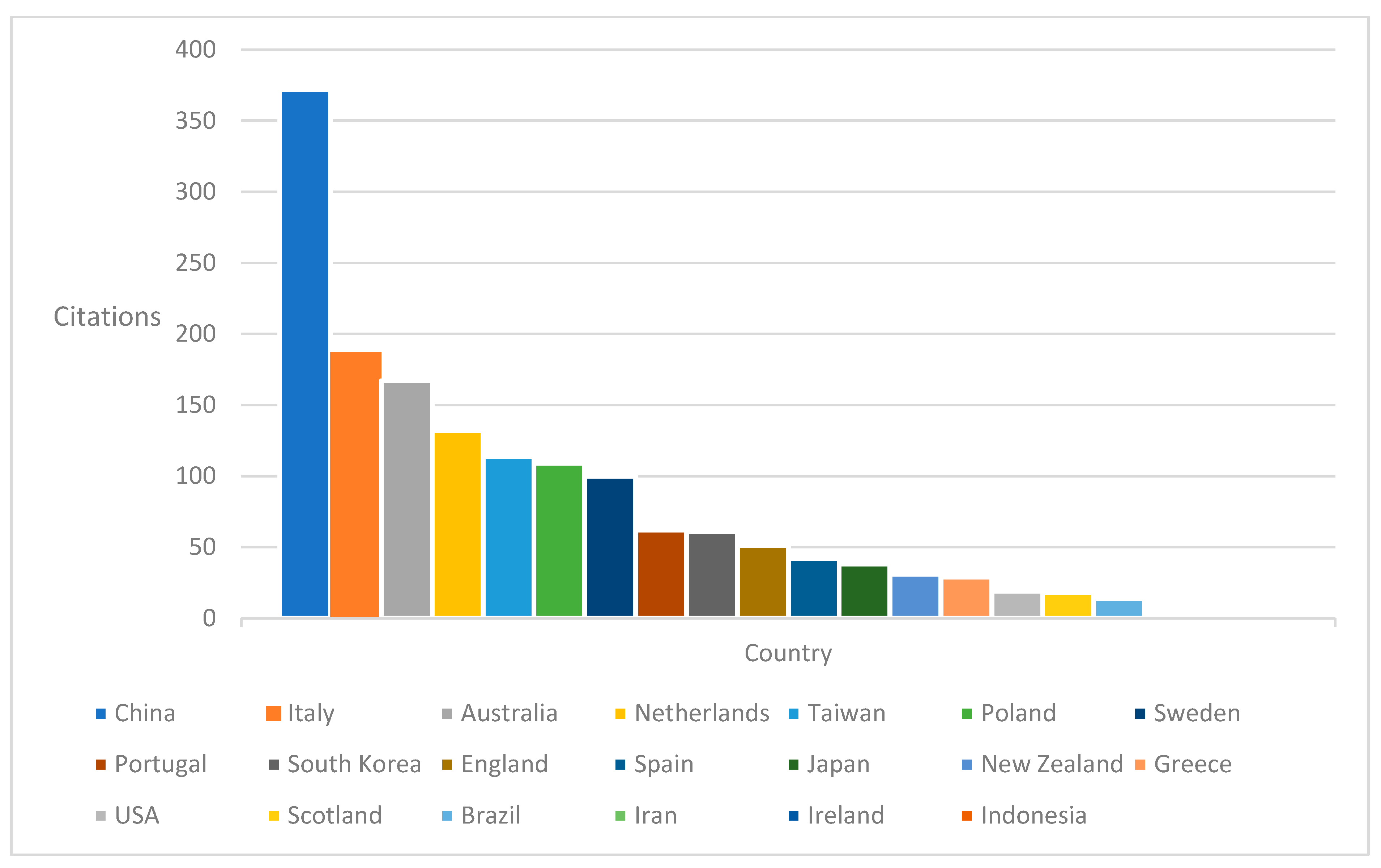

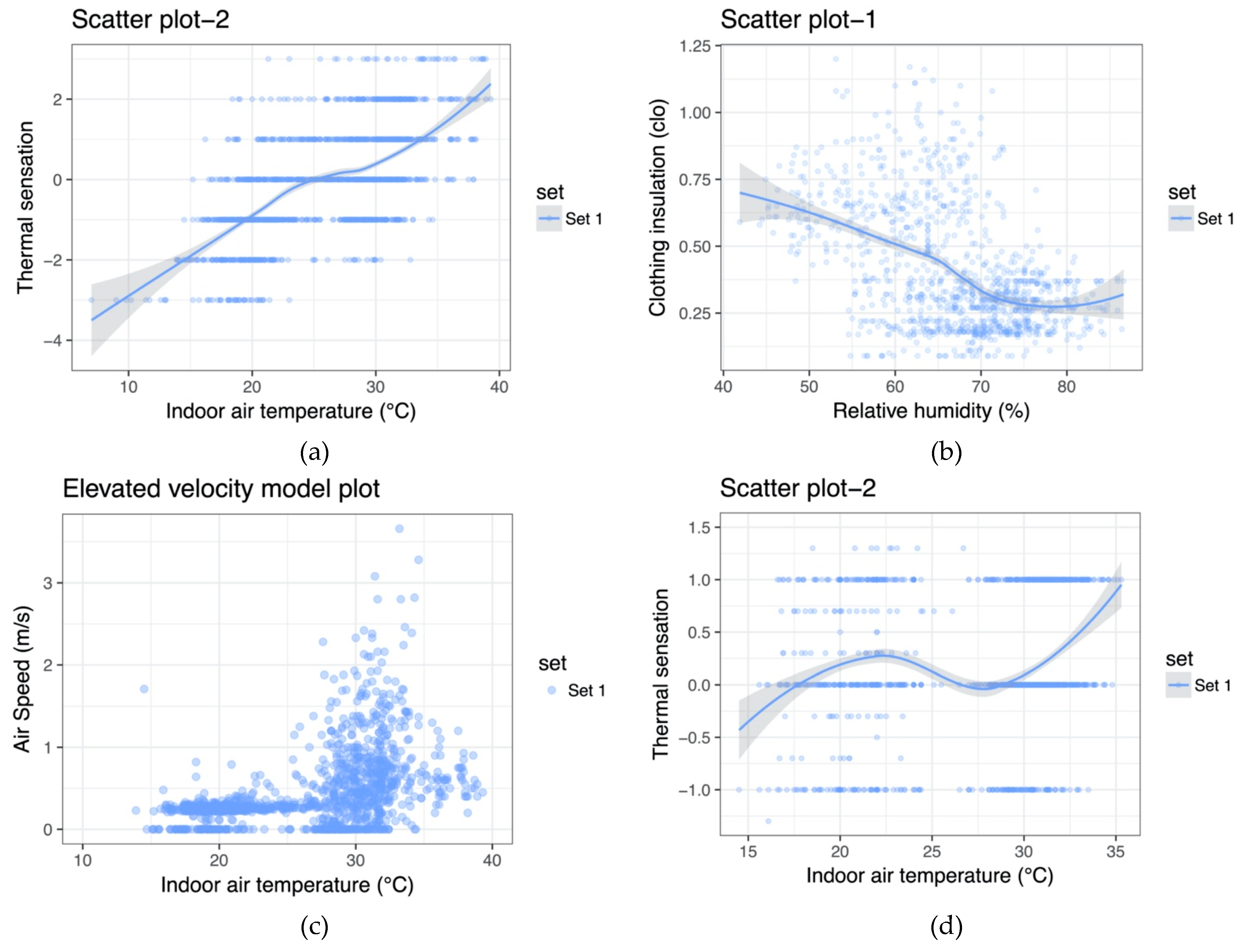



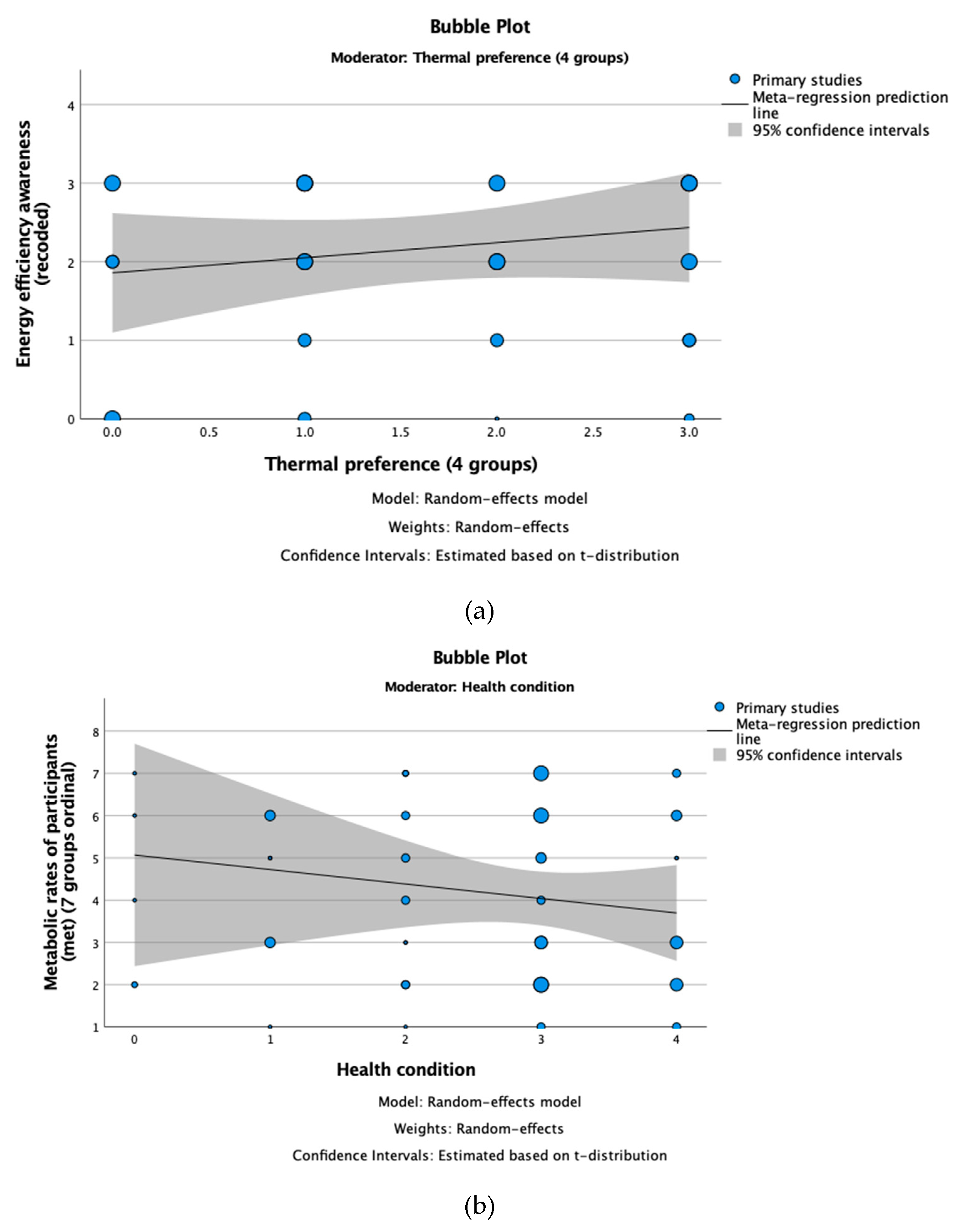
| References | Study Location | Objective (s) | Methodology | Main findings |
|---|---|---|---|---|
|
Li et al., (2022) |
Mongolia | To observe the thermal behavior of the elderly people in terms of their thermal sensation, preference and their thermal adaptive behavior to the winter climate conditions. | Using the in-situ environmental recording devices to measure the indoor air quality of the buildings. Longitudinal field survey was conducted to gather subject respondents’ thermal sensation votes. Questionnaire survey was conducted. Field measurements were recorded. |
Adaptive temperature range for the elderly people was found to be between 15,48 and 25,56 °C . The neutral adaptive thermal comfort temperature was found to be at 20,52 °C. |
|
Yuan et al., (2022) |
China | To study the significant impact of thermal properties of buildings and thermal comfort preference of elderly people in naturally ventilated residential buildings. | Subject respondents’ thermal sensation votes were gathered through a questionnaire survey. 152 elderly people were recruited for the study. |
The study was found to be that the thermally acceptable level has reached at 16,74 °C for the elderly people in cold climates. Although, elderly people were more vulnerable to temperature below 16,74 °C and less sensitive to temperatures above 15,67 °C. |
|
Yang et al., (2016) |
Korea | To- explore the impact of different seasonal variations on elderly people’s thermal sensation in nursery homes and to- assess the indoor air quality of occupied spaces in nursery homes. | Software simulation was used to optimize the building envelope by using different thermal parameters, including effective fenestration design principles were applied. | According to the findings of a longitudinal survey, metabolism rate remained constant. At the same time, clothing insulation level (clo) factor had an impact on the adaptive thermal comfort assessment. |
|
Forcada et al., (2021) |
Eastern Mediterranean basin |
To identify the discrepancies in the thermal sensation votes and to-assess subject respondents’ thermal preference in conjunction with the in-situ environmental measurements which were conducted at the time of undertaking the questionnaire survey in nursery homes in the winter. |
In-situ environmental monitoring was applied. 25 representative nursery homes were selected for the study. |
Therapists and caregivers indicated different thermal sensation votes. This deterministic factor has proven that clothing insulation level is the major indictor for the adaptive thermal comfort assessment. |
| References | Indoor Temp (°C) |
Relative Humidity (%) |
Air Velocity (m/s) |
Clothing (clo) |
Outdoor Temp (°C) |
Age (years) |
Metabolic rate (met) |
|---|---|---|---|---|---|---|---|
| Djamila, (2017) | 22-24,1 | <5% | 0-1 | 0,02-2 | - | 18-75 | 0,8-1,3 |
| 50 | 0.1 | 0,5-1 | |||||
|
Yi et al., (2022a) |
-10-60 | 5-95 | |||||
| Rawal et al., (2022) | 25–35 | 30 | 0-1 | - | - | - | - |
| References | Strategy | Heating load |
Cooling load |
Energy performance improvement | Thermal comfort improvement | Location |
|---|---|---|---|---|---|---|
| Dabaieh & Serageldin, (2020a) |
|
7,9 kWh/m2 | 2,8 kWh/m2 | Achieved annual surplus energy of 180 kWh/m2/annum | Achieved 88% of thermal comfort needs | Sweden |
| Dabaieh & Serageldin, (2020b) |
|
20 kWh/m2 | 99,2 kWh/m2 | Annual electrical energy savings of 42,9 kWh/m2/year |
|
Hot arid areas (Egypt) |
| Cellat et al., (2020) | Micro-encapsulated phase change materials (PCM) in concrete | - | - | 13% energy savings. | 2 °C indoor temperature gain was achieved | Adana, Turkey |
| Fernandez-Antolin et al., (2019) |
|
70,11 kWh/m2 | 18,43 kWh/m2 | Design was able to meet the Passivhaus Standard Building threshold | Not considered | Spain |
| Huang et al., (2020) | Cylindrical PCM-assisted Earth Air Heat Exchanger (EAHE) | 96% energy consumption reduction | 8,7% energy consumption reduction daily maximum cooling capacity of EAHE was increased by 28,55%–39,74% | Electrical Energy consumption reduced by 78,9% cooling output of the system increased by 20,05% | Not considered | China |
| Inputs | Adaptive Thermal Comfort Assessment Criteria | ||||
|---|---|---|---|---|---|
| Variables | ASHRAE-55-2020 80% acceptable limits |
EN-16798 acceptable comfort limits | |||
| Mean outdoor air temperature | 25°C | Comfortable Operative air temperature: | 22,1 to 29,1 °C | Class III | 22,1 to 31,1 °C |
| Operative air temperature | 25°C | 90% acceptable limits | Class II | 23,1 to 30,1 °C | |
| air velocity | 3m/s | Comfortable Operative air temperature: | 23,1 to 28,1 °C | Class I | 24,1 to 29,1 °C |
| ASHRAE 55 (%) | Suitability | PPD (%) | Fanger (PMV) | Adaptive (K) |
|---|---|---|---|---|
| 90 | Suitable for high standard thermal comfort | < 10 | -0,5<PMV<+ 0,5 | +2,5 |
| 80 | Suitable for typical applications when certain parameters are unavailable | < 20 | 0,85<PMV<0,85 | +3,5 |
| Model | Region | Age | Outdoor Parameter(s) | Thermal Response |
|---|---|---|---|---|
| Yang et al., (2016) | Korea | > 65 | 4-days weighted running mean of outdoor air temperature | Clothing insulation |
|
Wang et al., (2018) |
Shanghai, | > 65 | 7-days weighted running mean of outdoor air temperature |
Neutral temperature |
| Yuan et al, (2022) | China | > 70 | Prevailing mean outdoor temperature air |
Neutral temperature |
| Zhang et a.l, (2017) | China | > 70 | Outdoor air temperature | Clothing insulation, Thermal sensation vote, Proportion of air-conditioned |
| Zhao et al. (2021) | Chongqing, China |
> 60 | Outdoor air temperature | Proportion of windows opened; Proportion of fans used |
| Physical and environmental variables (Indoor) | Instruments used |
|---|---|
| Air temperature (Ta) & Relative Humidity (RH) | SIKA’MH 3350 (Digital Thermo-hygrometer) with TFS 0100E (sensor) temperature probe measurement |
| Range/resolution: Temperature: -40 °C to +120 °C /0,1 °C; Relative humidity: 0–100% RH/0.1% | |
| Accuracy: Temperature: ±0,5 °C; Relative humidity: ±0,1% | |
| Globe temperature (Tg) | K Type Thermocouple temperature probe TP-101 whose probe was inserted in a black-painted table tennis ball (40 mm diameter) (Measurement range: -50 °C to 600 °C; Accuracy: ±2,5 °C) |
| Air velocity | UNITEST Vane Thermo-anemometer 93460 (Measurement range: 0,3 m/s -45 m/s; Tolerance: ±3%) |
| Personal variables | |
| Metabolic activity (met) & Clothing insulation level (clo) | Estimated using checklist from the ASHRAE 55-2020 for corresponding activities & clothing insulation level |
| Parameter(s) | Ottawa | Montreal |
|---|---|---|
| Dry bulb indoor air temperature | Complete | Complete |
| Wet dry bulb indoor air temperature | Incomplete | Complete |
| Relative humidity | Complete | Complete |
| Air velocity | Incomplete | Complete |
| Clothing insulation | Complete | Complete |
| Outdoor air temperature | Complete | Complete |
| Outdoor relative humidity | Complete | Complete |
| Metabolic rate | Complete | Complete |
| Gender | Complete | Complete |
| Age | Not recorded | Complete |
| Scale | Thermal Sensation Vote (TSV) |
Thermal Comfort Vote (TCV) |
Thermal Acceptability (TA) |
Thermal Preference (TP) |
|---|---|---|---|---|
| 4 | - | Unbearable | - | - |
| 3 | Hot | Very uncomfortable | - | - |
| 2 | Warm | Uncomfortable | Very unacceptable | - |
| 1 | Slightly warm | Slightly uncomfortable | Just acceptable | Warmer |
| 0 | Neutral | Uncomfortable | - | No change |
| -1 | Slightly cool | - | Just acceptable | Cooler |
| -2 | Cool | - | Very acceptable | - |
| -3 | Cold | - | - | - |
| Age band | Cooling energy consumption in August 2015 | Floor level |
|---|---|---|
| Cooling consumption on weekdays | Cooling energy consumption in summer 2015 | Health condition |
| Clothing insulation levels of participants | Heating energy consumption in winter 2015 | Occupation |
| Type of cooling control in home | Cooling energy consumption in August 2016 | Heating consumption on the weekend |
| Ethnicity | Cooling energy consumption in summer 2016 | Household density |
| Thermal preference | Heating energy consumption in winter 2016 | Income |
| Interviewed room condition | Metabolic rates of participants | Length of residency |
| Orientation | Reasons for thermal discomfort | Space conditioning |
| Overall thermal satisfaction in summer | Thermal sensation in bedrooms 1, 2, 3 and living room | Type of cooling system |
| Window closing reasons | Window opening patterns in winter | Type of heating system |
|
Note:Additionally, all categorical variables were recorded in ordinal sequence where possible (e.g., metabolic rate) Variables related to occupants’ thermal preferences were recoded from very cold to very hot All variables were recoded from smallest value to largest value All dichotomous variables were recoded to 1 = yes, 0 = no | ||
| Comparative studies | 80% acceptability |
|---|---|
| Kalmár (2016) | 25 -30 °C |
| Indraganti et al., (2014) | 27,5 -30 °C |
| Singh et al., (2011) | 2,8 -31 °C |
| Singh & Chani, (2018) | 22,5 -29,8 °C |
| 21,91 -29,3 °C |
| Research Questions | Occupation | Weekday Heating- Consumption Patterns |
Weekend Heating- Consumption Patterns |
Weekday Cooling- Consumption Patterns |
Weekend Cooling- Consumption Patterns |
|
|---|---|---|---|---|---|---|
| Q 1: What is your occupation? | 1 | 0,253* | 0,109 | 0,098 | 0,167 | |
| — | 0,042 | 0,896 | 0,955 | 0,579 | ||
| Q 2: When do you turn on heating device(s) on weekdays? | 0,253* | 1 | 0,373* | 0,611* | 0,504* | |
| 0,042 | — | <0,001 | <0,001 | <0,001 | ||
| Q 3: When do you turn on heating device(s) on the weekend? | 0,109 | 0,373* | 1 | 0,522* | 0,706* | |
| 0,896 | <0,001 | — | <0,001 | <0,001 | ||
| Q 4: When do you turn on cooling device(s) on weekdays? | 0,098 | 0,611* | 0,522* | 1 | 0,774* | |
| 0,955 | <0,001 | <0,001 | — | <0,001 | ||
| Q 5: When do you turn on cooling device(s) on the weekend? | 0,167 | 0,504* | 0,706* | 0,774* | — | |
| 0,579 | <0,001 | <0,001 | <0,001 | 1 | ||
| Occupation – Weekend heating consumption, Fisher’s exact = 2,41, p = 0,896, Cramer’s V = 0,109 Occupation – Weekday heating consumption, Fisher’s exact = 12,49, p = 0,042, Cramer’s V = 0,253 Occupation – Weekend cooling consumption, Fisher’s exact = 7,63, p = 0,579, Cramer’s V = 0,167 Occupation – Weekday cooling consumption, Fisher’s exact = 1,76, p = 0,955, Cramer’s V = 0,098 Weekday cooling consumption – Weekend heating consumption, χ²(4) = 54,59, p < 0,001, Cramer’s V = 0,522 Weekday cooling consumption – Weekday heating consumption, χ²(4) = 74,57, p < 0,001, Cramer’s V = 0,611 Weekday cooling consumption – Weekend cooling consumption, χ²(6) = 119,77, p < 0,001, Cramer’s V = 0,774 Weekend cooling consumption– Weekend heating consumption, χ²(6) = 99,69, p < 0,001, Cramer’s V = 0,706 Weekend cooling consumption– Weekday heating consumption, Fisher’s exact = 49,70, p < 0,001, Cramer’s V = 0,504 Weekday heating consumption– Weekend heating consumption, χ²(4) = 27,89, p < 0,001, Cramer’s V = 0,373 | ||||||
Disclaimer/Publisher’s Note: The statements, opinions and data contained in all publications are solely those of the individual author(s) and contributor(s) and not of MDPI and/or the editor(s). MDPI and/or the editor(s) disclaim responsibility for any injury to people or property resulting from any ideas, methods, instructions or products referred to in the content. |
© 2023 by the authors. Licensee MDPI, Basel, Switzerland. This article is an open access article distributed under the terms and conditions of the Creative Commons Attribution (CC BY) license (http://creativecommons.org/licenses/by/4.0/).




